Country Area 587.29 km2 | Region Northern Mindanao Founded January 16, 1961 | |
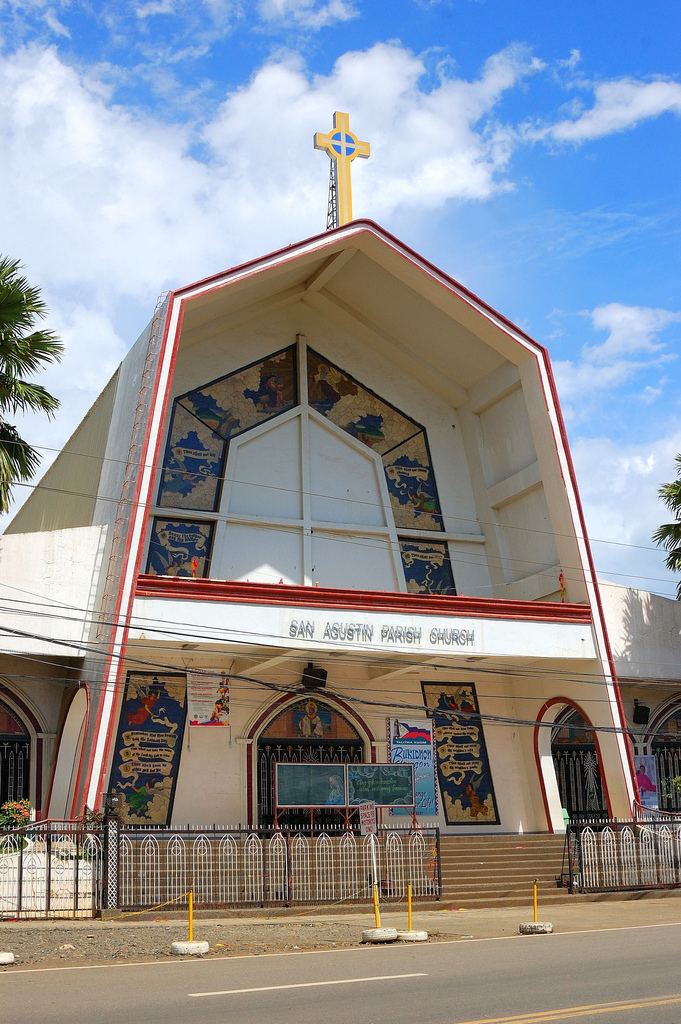 | ||
Colleges and Universities | ||
Languages spoken Cebuano, Filipino, English, Ilonggo District 4th District of Bukidnon Mayor Azucena P. Huervas (Bukidnon Paglaum) | ||
Map of Valencia, Bukidnon
Valencia City, officially City of Valencia and often referred to as simply Valencia, is a 2nd class component city in the province of Bukidnon, Philippines. According to the 2015 census, it has a population of 192,993 people.
Contents
- Map of Valencia Bukidnon
- Valencia the city of golden harvest only in bukidnon
- Origins
- Political birth
- Cityhood
- Geography
- Topography
- Elevation
- Slope
- Geology and soil type
- City administration
- Barangays
- Demographics
- Colloquial names
- Religion
- Commerce and trade
- Agriculture
- Tourism
- Festivals and events
- Transportation
- Public markets
- Parks and venues
- Utilities
- Communication
- Hospitals
- Colleges
- Primary and secondary schools
- Media
- References
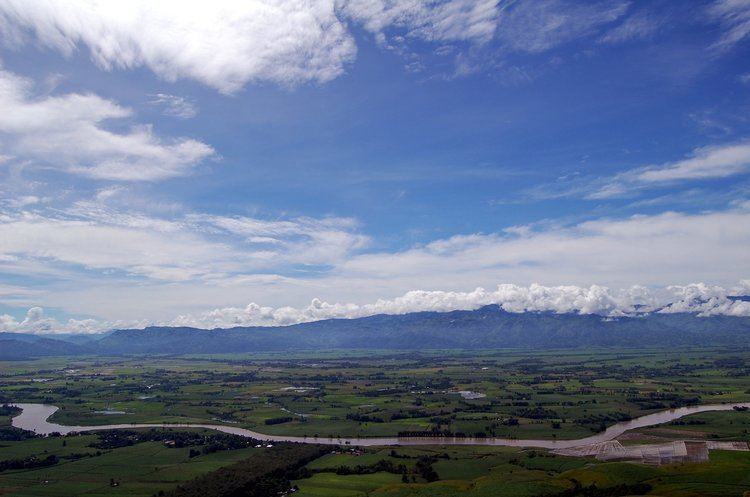
Valencia attained its city status after the ratification of Republic Act 8985 in January 12, 2001. The city is the most populous among all cities and municipalities, and the 6th largest in terms of area in the province of Bukidnon. It is also the most populous inland/landlocked city in Mindanao. It is the third largest city in Northern Mindanao, after Cagayan de Oro and Iligan City respectively. The city serves as the center of trade and commerce in the province of Bukidnon.

Valencia the city of golden harvest only in bukidnon
Origins
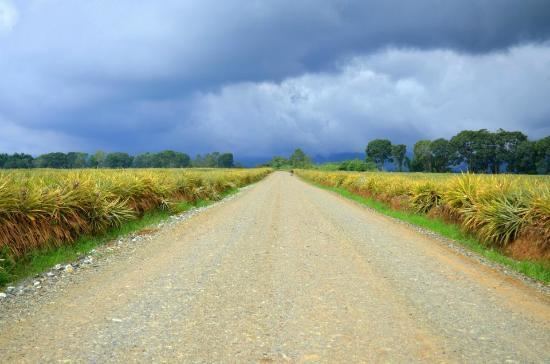
The territory that now comprises the city of Valencia were former thirteen Barangays of the City of Malaybalay, Bukidnon.
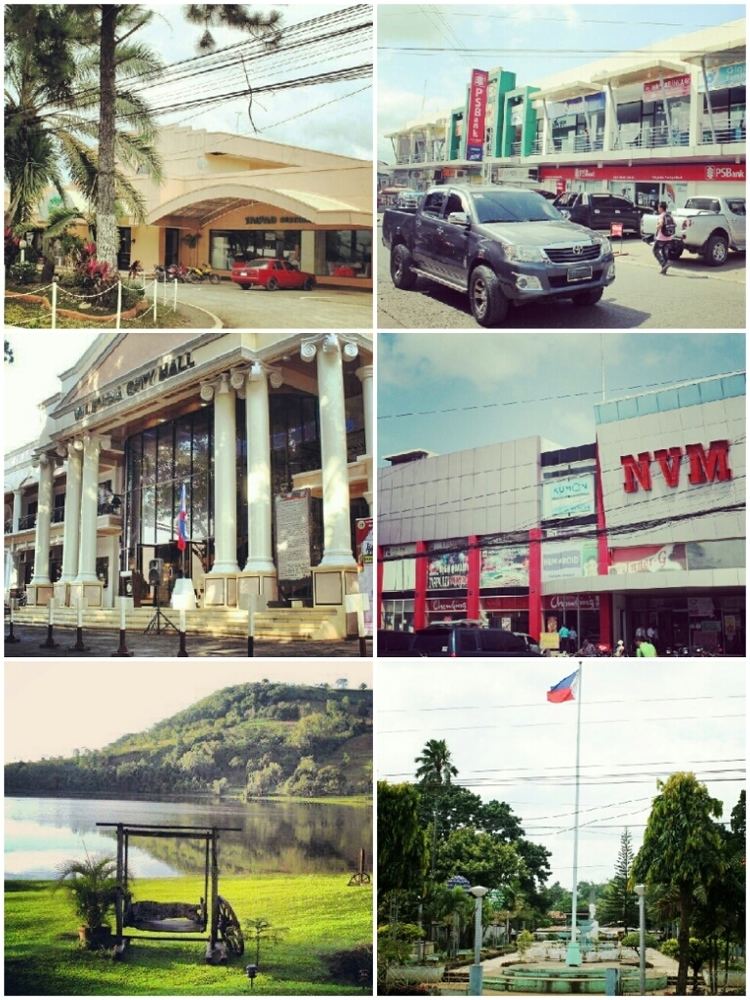
The earliest inhabitants in the area presently comprising part of the Poblacion were Bukidnon natives who founded a settlement along the banks of Pulangi River and the confluence of the Panglibatuhan River. The pioneers were led by Datu Sebastian Manangkila together with the families of the Binalhays, Laugas, Dongogans, Gua-ans, Lanayans, and the Arenzos. The first site of the settlement was a sitio named “Panglibatuhan” because the area was thickly forested by tree species called by the natives as “Malibato trees”. In 1911, on-room barrio school was opened, and its first teacher was the late Leon Galorport. That school site is approximately the present location of the Poblacion Barangay High School. Galorport, who came from his hometown, Valencia, Bohol named the school “Valencia School”. When the sitio became a barrio of Malaybalay, the resident agreed to name it “Valencia”. Finally, when the southern portion of Malaybalay was separated as a new municipality, the petitioners agreed to name the municipality as “Valencia”. The barrio which was Valencia is now Barangay Poblacion and is the seat of the city government of Valencia.
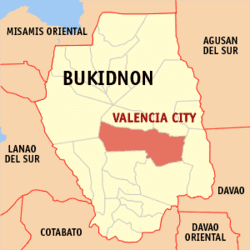
The rich natural resources found in the territory eventually attracted Christian settlers from the highly populated coastal areas of Mindanao, Visayas and Luzon islands.
Political birth
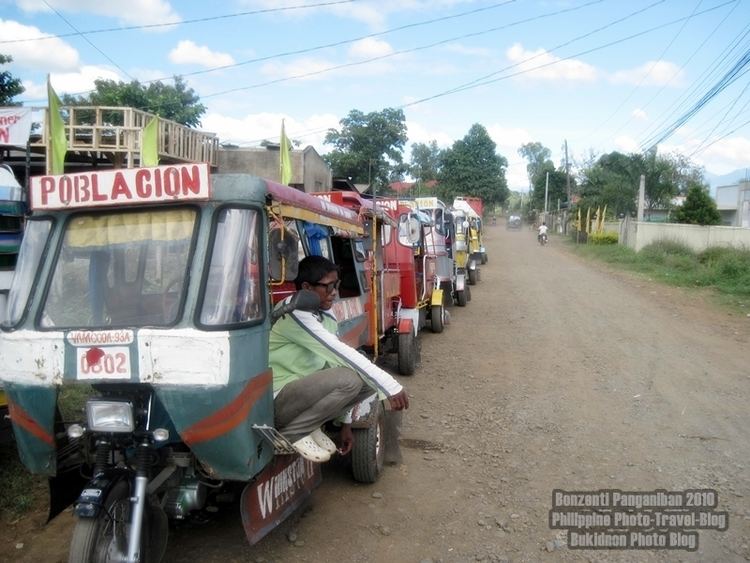
The prime mover in the creation of Valencia as a municipality was Teodoro Pepito, who spearheaded a petition by the residents of barrio Valencia and neighboring barrios to convert the territory into a full-fledged municipality. The petition was forwarded to the Provincial Board of the Bukidnon province for consideration. The Provincial Board passed a resolution approving the creation of the Municipality of Valencia and forwarded the same to the Office of the President of the Philippines. By virtue of the provisions of Executive Order No. 360, the municipality of Valencia was formally born on January 16, 1961. In 1961, President Carlos P. Garcia appointed Teodoro Pepito and Ernesto Garcia as the mayor and vice mayor respectively. Upon the election of President Diosdado Macapagal in November 1961, another set of municipal officials were appointed, with Lucilo Alkuino as municipal mayor and Solomon Gao-ay as vice mayor. Thus, between 1962 and 1963, two sets of municipal officials have served the municipality of Valencia.
During the regular local election in November 1963, Pepito won and became the first elected mayor, with Ernesto Garcia as the vice mayor. Mayor Pepito was re-elected in 1967 and again in 1971. However, before his term expired in 1975, martial law was declared by President Ferdinand Marcos in 1972 and elections for local officials were suspended. Mayor Pepito continued to hold office as mayor until 1978, when he retired from government service. The vice mayor, Absalon Catarata, succeeded as municipal mayor until 1979, when President Ferdinand Marcos appointed Santiago Dablio as acting mayor of Valencia.
In 1980 local elections, Absalon Catarata was elected municipal mayor, with Romulo Makalood as vice mayor together with all the councilors in the opposition ticket. In February 1986, the People Power Revolution in Manila took place and Corazon Aquino became the President of the Republic. During the campaign for the approval of the new constitution, the municipal government under the leadership of Absalon Catarata wholeheartedly supported it. In January 1988, Catarata was re-elected as mayor and his running mate, Berthobal Ancheta was elected as vice mayor together with seven councilors under his party. Months later, he was elected president of the Bukidnon Mayors League and similarly as president of the Mayor’s League of Region X. In the evening of April 21, 1988, Absalon Catarata was fatally shot by an unknown assassin in front of his residence while waiting for his service vehicle which would have fetched him to an evening program at the town plaza. After his death, Vice Mayor Berthobal Ancheta became the municipal mayor, and Afrodisia Catarata, the wife of the late mayor, was appointed member of the Sangguniang Bayan. In the synchronized elections of 1990, Mayor Berthobal Ancheta was re-elected while Afrodisia Catarata was elected as vice mayor up to June 2001.
Cityhood
By virtue of Republic Act 8985, an act converting the municipality of Valencia in the province of Bukidnon into a component City known as the City of Valencia on January 12, 2001. In 2001 elections, Jose Galario, Jr., former Chief of Police of the City was elected as City Mayor while the son of the late mayor, Absalon Catarata and former Vice Mayor Afrodisia Catarata was also elected as the city’s vice mayor in the person of Leandro Jose Catarata. During the 2004 local elections, both the incumbent mayor and vice mayor run for the position of city mayor. Jose Galario, Jr. emerged as the winning candidate together with Benjamin Verano as vice mayor. In the 2007 elections, incumbent Mayor Jose Galario, Jr. lost to his rival, Leandro Jose Catarata for city mayor. Benjamin Verano was re-elected as vice mayor of the city. In the 2010 general elections, incumbent Leandro Jose Catarata was reelected for a second term; while Benjamin Verano, Sr., Catarata's running mate, won the vice mayoralty position of the City of Valencia. However early in 2010, Verano died at office and was replaced by Azucena Huervas, the president of Valencia's Association of Barangay Captains.
In June 9, 2014, Vice Mayor Azucena Panes Huervas assumed the Mayorship of Valencia City after the Conviction of Mayor Galario for violating the Anti-graft and Corrupt practices Act (RA 3019) in relation to his order transferring Ruth P. Piano from Budget Office to a non-existing office of City Liaison Officer.
May 9, 2016 Elections, Mayor Azucena P. Huervas was elected by the people of Valencia against her rivals, Amie G. Galario, Renato Centillas, and Leandro Jose H. Catarata. City Councilor Glen G. Galario on the other hand toppled Vice Mayor Rolando P. La Vina as Vice Mayor. The Following were also elected as City Councilors: 1. Rhea Rhenna H. Agripo 2. Glenn Peduche 3. Ramir Roque 4. Rodrigo Rosal 5. Camilo Pepito 6. Atty Oliver Owen L. Garcia ( the current Councilor League President of Bukidnon) 7. Helen T. Bernal 8. Dr. Policarpo P. Murillo IV 9. Johnlee B. Quillo 10. Eduardo D. Chan
Geography
Valencia City is located in the central part of the Province of Bukidnon. It is bounded on the north by the municipality of Lantapan and Malaybalay City; on the east by the municipality of San Fernando; on the west and southwest by the municipalities of Pangantucan and Talakag; and on the south by the municipalities of Maramag and Quezon.
From its core, which is the Poblacion, the city is 27 kilometers from the provincial capital of Malaybalay City and 118 kilometers from the regional center of Cagayan de Oro City. The means of transportation is by bus and private vehicles and covers approximately two to three hours ride.
The relative distance of the barangay from the city proper varies: four barangays are more or less 5 kilometers away, 20 barangays are 6 - 15 kilometers away, while the remaining 7 barangays considered as the most interior, are situated 16 kilometers or more from the city proper.
There are no seaports or airports in the city, but the nearest are in Cagayan de Oro City.
Topography
The city’s topography is characterized as flat to undulating hills with extensive plateaus and mountainous areas and cliffs on both eastern and western portions bounding the municipality of San Fernando on the east and the municipality of Talakag on the west. Its highest point is Mount Kalatungan in the Kalatungan Mountain Range rising above 1,000 meters and above 50 percent slopes. These cover 25.72 percent of the total city area and major portions of Barangay of Lourdes, Guinoyuran and Lilingayon.
Elevation
The City’s average elevation is 300 meters above sea level. Elevation above 1,000 meters has a bigger area coverage with 28.93 percent of the total city area or 18,262.79 hectares. While elevation below 300 meters covers only 7.0 percent of total city area or 4,419.78 hectares. Elevation ranges from 300–500 meters covers an area of 27,591.10 hectares or 43.70 percent of the total city area. 500-1,000 meter elevation covers an area of 18,262.79 hectares or 28.93 percent of total city area.
Slope
The area distribution of slope of the city are categorized into: level to gently sloping having a slope range of 0-3 percent covering an area of 6,962.53 hectares or 11.02 percent of the total city area; gently sloping to undulating having a slope range of 3-8 percent covering an area of 18,914.79 hectares or 29.96 percent of total city area; undulating to rolling having a slope range of 8-18 percent covering an area of 3,646.33 hectares or 5.78 percent of the total city area; rolling to hilly having a slope range of 18-30 percent with an area coverage of 11,306.28 hectares or 17.92 percent of the total city area; steep hills to mountainous having a slope of 30-50 percent with area coverage of 6,062.53 hectares or 9.60 percent of the total City area and; cliff-like streamline having a slope range of 50 percent above covering an area of 16,233.54 hectares or 25.72 percent of the total area.
Geology and soil type
Valencia City is underlain by three distinct geologic formations. Volcanic rocks believed to be of pliocene-quaternary age underlie the areas west of Pulangi River. The areas east of the broad plains in Valencia City are underlain by stratified sequence of clastic sedimentary rocks and limestone. Alluvial deposits are unconsolidated detrital materials transformed from higher landforms.
The city generally has clay soil with Adtuyon clay covering 27.89 percent of the total city area suitable for annual cultivated crops and pastures. These are found in all parts of Colonia, Mailag, Bagontaas, Barobo and San Carlos. Maapag clay ranked second with 26.86 percent and covers the whole of San Isidro, Sinayawan, Mabuhay, and Catumbalon and large portions of Vintar, Tongantongan, Maapag and Batangan. Irrigated rice is suitable in these areas. Macolod clay ranked third with 17.51 percent and are generally suited for forest plantation of exotic species. Kidapawan clay loam and undifferentiated mountains soil followed and occupy a combined area of 17.70 percent located within Lilingayon. These areas are also suitable for production forest of native species. Other soil types are San Manuel clay loam (5.31%), La Castellana clay (3.41%), Adtuyon clay stony phase (0.83%), and Mailag clay loam. These types of soil are suitable for annual cultivated crops except for the cliffs along Pulangi River within Poblacion and Lumbo which are not suitable for any land use.
City administration
The city is executively administered by the mayor together with vice mayor. The legislative body comprises the members of the Sangguniang Panlungsod which serves as the city council. The mayor is the local chief executive officer of the city and exercises control and supervision over all local administrative offices; while the Sangguniang Panlungsod acts as the legislative body of the city as mandated by the Local Government Code of the Philippines.
Barangays
Valencia City is politically subdivided into 31 barangays:
Demographics
In the 2015 census, the population of Valencia, Bukidnon, was 192,993 people, with a density of 330 inhabitants per square kilometre or 850 inhabitants per square mile. In addition, Valencia's Barangay Poblacion is the largest barangay in the province and third largest in the region according to population.
Immigration of Christian settlers to the area started in the middle 1930s. During the Second World War, the continued migration of Christian settlers further increased the population of the area from 13,898 in 1960 to 64,541 in 1975. The population grew to 181,556 in 2010.
Colloquial names
Poblacion and its surroundings hold importance in the city serving as the venue of everyday life in and near the urban center. Due to its large urban population and area, there are informal and unofficial sectors which hold cultural, social, and economic significance to the city. These areas are also referred for transportation means when riding within and from the Poblacion. Some of the important de facto sectors/areas in the urban center include:
Balite - a concentration of residences at the northern part of the Poblacion. Named after the large tree that once stood there.
Barok - located on the western end of Laviña Ave. Valencia City Farmer's Market, several commercial establishment and residential areas are found here.
Cabanuangan - areas on the upper part of Poblacion, dominated by sugarcane fields and some residences.
Centro - the business center of the city from the core area of the Poblacion extending up to the boundary of Brgy. Poblacion to the south stretching Sayre Highway.
Hagkol - a commercial-residential area north of Poblacion stretching the Sayre Highway. Several food stores and shops, tertiary schools, auto shops and stores, hotels, residential villages, and fuel stations are found at Hagkol.
Hindangon - area on the northwestern part of Poblacion after Juanilla Village along Hagkol. Areas are mostly residential and diversified agricultural fields.
Kawayanon - an urban sitio in the lower part of Brgy. Lumbo bounding Brgy. Poblacion.
La-uyan - residential area in the western bank of Pulangi river near the Panlibatuhan creek.
Malingon, Bagontaas - currently the northern-most urban expansion of the city which is part of Brgy. Bagontaas. Some commercial establishments, schools, a village, Toyota Valencia, Valencia Integrated Transport Terminal Complex, and the future Robinsons Place Valencia are located in the said area.
Petisyon - a rural hill in the western-most side of Poblacion.
Santa Cruz - upper portion of the Poblacion along Guinoyuran road near the boundary of Brgys. Barobo and Poblacion. Sparse residences and agricultural fields and a chapel is present in the area.
Slaughter - concentration of residences on the southern slope and lower areas of a hill where the City Hall is located. Named after the Abattoir or “Slaughter House” which is located in the area.
Tabuk-Tulay - literally means “to cross the bridge”, after vehicles passing eastside the Pulangi or Batangan Bridges from the Poblacion. This term also colloquially include most parts of Batangan. Fuel stations, residential villages, auto shops, several commercial stand and rice mills are found in the area.
Upper Lumbo (Centro Lumbo) - comprising the residential areas and villages in the upper portion of Brgy. Lumbo.
Upland - concentration of residences south of Centro covering some parts of Purok 3 and Purok 3-B of Poblacion.
Other places in the urban area of the city are referred by their building/establishment names, streets, and Purok.
Religion
The City has several sects namely: Seventh-Day Adventist Church, Church of Christ of Latter-Day Saints, Jehovah's Witnesses, Iglesia Ni Cristo, United Church of Christ in the Philippines, Iglesia sa Dios Espiritu Santo, United Methodist Church, several Baptist and Pentecostal congregations, and many others. Valencia also has 5 islamic mosques around the city.
There are 5 Roman Catholic Parishes, and 3 quasi-parishes in the city:
The parishes are under the pastoral administration of Diocese of Malaybalay.
Commerce and trade
Valencia City is the center of trade and commerce in Bukidnon because of its central location in the heart of Mindanao, and of its fast economic growth. The city is noted for its Valencia Rice, a variety of rice.
Some of the known retail stores in the city are: Alkuino Emporium, Fiesta Shopping Center, Gaisano Valencia, NVM Mall, Puregold, Plaza Villahermosa, Roy Plaza, Robinsons Supermarket, Trendline, and Unitop. There are also coming stores such as NVM Mall-Guinoyuran Road and Robinsons Place Valencia, second Robinsons Place brand in Northern Mindanao after Iligan. Commercial establishments owned by Maranao, Chinese, and Korean are also plying in the city. Gaisano Valencia used to have Gaisano Cinemas as well.
The city have good atmosphere of purchasing ability. Some of the other famous retail brands that are serving the city are Jollibee, Chowking, Greenwich, McDonalds, Red Ribbon, Goldilocks, 7-Eleven, Penshoppe, Citi Hardware, Rough Rider Jeans, Yamaha, Mitsubishi, Toyota and Honda.
Commercial activities are centered on the Poblacion, particularly at the locally termed "Centro" (Downtown). Several retail stores, banks, and commercial establishments are located in this area of Poblacion. Aside from the Centro proper, there are some commercial establishments at Hagkol, on the north portion of Poblacion. It is a result of northward urban expansion of the city. Famous motorbike and vehicle retailers, hotels, schools, hospitals and cafes are at Hagkol area.
Of the 52 banks actively serving the entire Bukidnon, 20 banks (about 40% of the province) are located in Valencia City. 9 of the 10 largest universal/commercial banks in the country serve the city (except Unionbank). Also, there other banks such as Veterans Bank, One Network Bank, Asian United Bank, PSBank, Bukidnon Cooperative Bank, Enterprise Bank, Dumaguete City Development Bank, Rizal Microbank, EastWest Rural Bank, Bank of Makati and Banco Dipolog.
During the year 2013, the city had a total generated income of Php 667,728,494. This continues to exceed above 600,000,000 the following years.
Agriculture
The city has a total land area of 63,126 hectares, 35,321.74 hectares or 55.95% of this is the total agricultural area that is suitable for crop production. This manifests that the City is agricultural-based in which people depend much of their source of income through farming, livestock and poultry. It is nicknamed as the City of Golden Harvest because of its vast rice plains along the barangays north and east of Pulangi River. Valencia’s clayey soil which is highly irrigated and favourable to climatic condition is very conducive for crop production.
Tourism
Valencia has several tourist destinations, and tourist drawing events:
Festivals and events
Transportation
Valencia City is accessible by land transportation. The existing land transportation in the city consists of jeepneys from nearby municipalities and barangays, and single motorcycles at Valencia City Public Transport Terminal (Old Terminal), located at Poblacion. Public utility vehicles in Old terminal bound to following municipalities: Kadingilan, Kalilangan, Kibawe, Malaybalay City, Maramag, Quezon, San Fernando, and Wao.
Buses from Cagayan de Oro City, General Santos City and Davao City are housed in Integrated Transportation Terminal Complex located at Barangay Bagontaas, approximately 3 kilometers north from Poblacion. Pabama Transport, Rural Transit and Tours, and Super 5 serves the city with their regional routes. There are also numerous provincial buses serving the city.
Tricycles (locally Motorelas), and private vehicles facilitate the movement of people and goods to and from all places in the city. Traveling from Poblacion is mainly by land through all kinds of vehicles.
Major thoroughfares in the city include Sayre Highway, G. Laviña Avenue (Guinoyuran Road in extension), and Kapalong-Talaingod-Valencia Road.
Traffic in Poblacion now become a serious problem in the city, especially the major thoroughfares. To decongest traffic in the city center, Valencia By-pass Road is under construction with its junction in Barangay Mailag. The said road will have its other end at Musuan, Maramag, Bukidnon. The City Government also implemented one-way traffic scheme on the whole stretch of Quezon and Mabini Street. The strict implementation of traffic rules is also observed to promote road safety and order.
Common traffic choke points, which all intersects Sayre Highway, are the following: Catarata Street junction, G. Laviña Avenue junction, and Batangan Bridge junction (Kapalong-Talaingod-Valencia Road).
Public markets
Valencia City has two functional public markets.
Parks and venues
Valencia has some event centers which ables the city to host many provincial and even regional gatherings. These venues include: Valencia City Gymnasium, SAIT Gymnasium, City Oval Grounds, Bukidnon Football Training Center, CAP Auditorium and many others. It has only one public park, which is the Plaza Rizal.
Utilities
The water system of the City is administered by the Valencia City Water District that caters five barangays namely Poblacion, Lumbo, Bagontaas and Mailag. 29 Barangays enjoy electricity supplied by the First Bukidnon Electric Cooperative. 1 Barangay enjoys power supply by Bukidnon Second Electric Cooperative.
Communication
Telecommuncation services are primarily offered by telephone companies such as Philcom–PLDT and Sotelco, and mobile services by Smart Communications, Globe Telecom, and Sun Cellular. Internet services are also offered by Philcom–PLDT, Smart Communications, and Globe Telecom.
Hospitals
Colleges
Valencia City has several colleges:
There are also numerous students who chose to study in Central Mindanao University, part of Municipality of Maramag, approximately 7 kilometers from the city proper.
Primary and secondary schools
Private primary and secondary schools:
Almost every barangay has a public primary school, the largest of which is Valencia City Central School located in Barangay Poblacion. There are other primary secondary schools in the city. However, public secondary education is primarily offered by Valencia National High School, which is also the largest in the city.
Media
Free-to-air television broadcasts are provided by ABS-CBN and GMA Network through their relay broadcast towers located at Mount Kitanglad in nearby Malaybalay City. This city is a planned channel like TV5 and ABS-CBN Sports and Action will be launched on 2016. Cable television is available through Parasat Cable TV; while satellite cable are primarily provided by Dream Satellite TV and Cignal Digital TV. Radio broadcasts are primarily provided by FM frequency stations such as DXCP FM, DXWB-FM, DXEM-FM, DXRP-FM, DXBP-FM and DXCV-FM; and AM stations such as DXDB-AM (the oldest running radio station in Bukidnon), DXCR AM, and DXMV AM. National circulating newspapers like Philippine Daily Inquirer, The Philippine Star, Manila Bulletin and Kastigador Balita Mindanao, are available in the city. Several local Mindanao newspapers and tabloid sheets are also circulating in the city.
